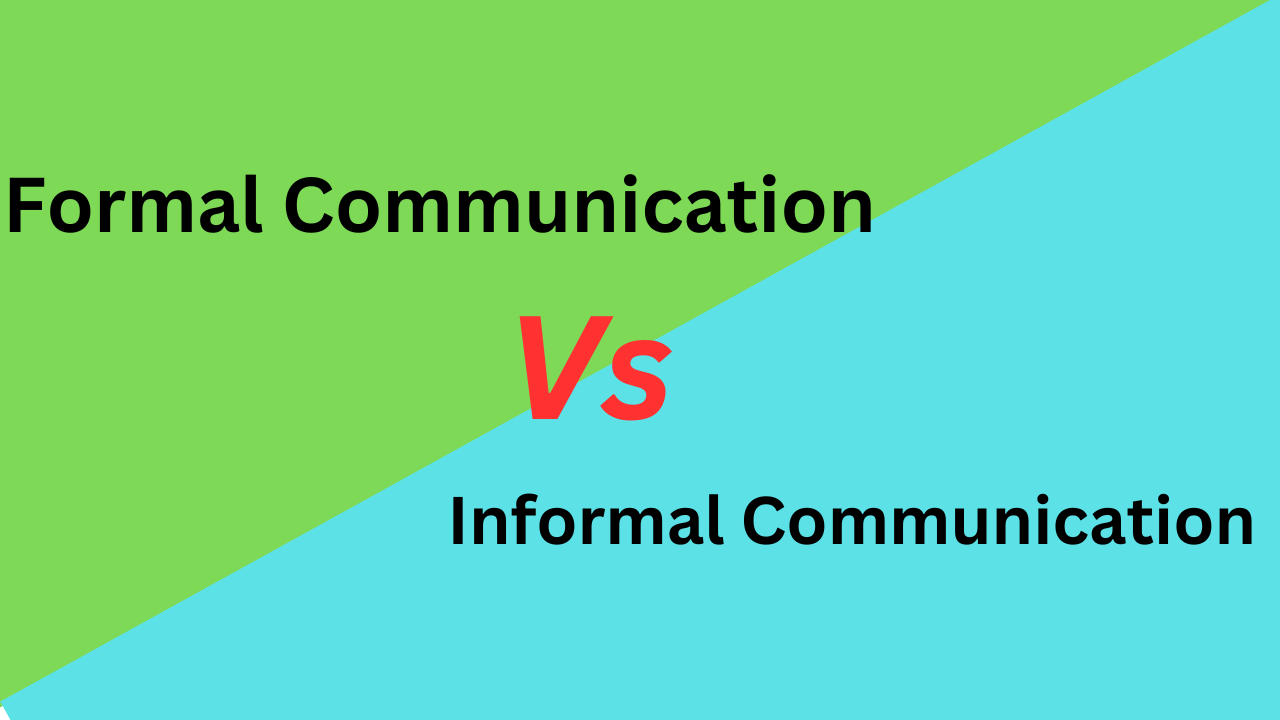What is the difference between formal and informal communication?
Communication is a core tool that plays a crucial role not only in people’s lives but also in the growth of organizations. It is grouped as formal and informal communication.
The main difference between informal and formal communication is that formal communication is always backed by pre-defined channels of communication while there are no rules set for informal communication.
The lesson offers the core difference between formal and informal communication with a comparison table and video. Let’s have a look at each category.c
What Is Formal Communication?
Formal communication is a type of communication that flows through predefined channels throughout the organization.
This type of communication is quite common in the workplace where employees are required to follow when performing their duties. Examples are Requests, commands, orders, reports, etc.
Formal communication is further grouped into:
- Upward or Bottom-up is where the flow of communication move from subordinate to superior authority.
- Downward or Top-down is where the flow of communication starts from superior in authority to subordinate
- Horizontal or Lateral is communication between employees of different departments.
- Crosswise or Diagonal is communication between employees of two departments working at different levels
What Is Informal Communication?
Informal communication is a type of communication that flows in any direction. The information moves freely within the organization. The flow of information is quite fast and rapid.
This type of communication enables people to interact naturally despite their professional life, personal life, and other matters. Examples are sharing of feelings, casual discussion, gossip, etc.
Informal communication is further grouped into:
- Single Strand Chain is communication where one tells another information and the person tells another person again. It is informed of gossip.
- A cluster Chain is where a person tells information to some most trusted people. These people later tell their best friends and communication continues.
- Probability Chain is a form of communication where one person chooses another person to pass on some information that is of less importance.
- Gossip Chain is where a person tells information to a group of people who later pass information to another large group of people.
Comparison Chart: Formal Vs Informal Communication
| Basic Terms | Formal Communication | Informal Communication |
| Definition | It is a type of communication made according to predefined channels set by the organization | It is a type of communication where the exchange of information does not follow predefined channels |
| Alternative Name | Official Communication | Grapevine communication |
| Reliability | More | Comparatively less |
| Speed | Slow | Very Fast |
| Core Purpose | Exchange of vital information among various departments | Maintain relationships inside and outside the organization |
| Types | Upward or bottom-up, downward or top-down, horizontal for lateral and crosswise or diagonal communication | Single strand chain, cluster chain, probability chain, and gossip chain. |
| Frequency | Occur frequently inside the organization to enhance the performance of duties | Occurs less frequently in the internal communication environment |
| Evidence | There are documentaries since it is written | No documentaries |
| Secrecy Level | Tend to be maintained | Difficult to maintained |
| Time and Cost | Require a lot of time and money | Less time and cost since no standard procedures to be followed |
Read More: Difference between Verbal and Non-Verbal Communication
Core Difference Between Formal and Informal Communication
- The alternative name for formal communication is official communication while that of informal communication is grapevine communication.
- Formal communication follows the certain set chain of command while informal communication moves freely in all direction.
- Formal communication help to maintain a high level of secrecy whereas no secrecy can be maintained under informal communication
- Informal communication tend to be oral whereas formal communication is written
- Formal communication tends to be time-consuming whereas informal communication is less time-consuming.
- Formal communication is quite reliable whereas informal communication is less reliable
- Formal communication is designed by the organization while informal communication occurs naturally.
- Documentation happens in formal communication whereas informal communication has no documentation.
- Formal communication has long-chain command whereas informal communication is quite simple due to short-chain command
- Examples of formal communications are business letters, memos, contracts, agreements, and reports whereas informal communication is face to face discussions and telephone calls.
- Formal communication tends to be quick and rapid whereas informal communication is comparatively slow
- Formal communication does not encourage the use of slang words while informal communication tends to encourage slang words.
- The scope of formal communication is restricted within the organization environment while that of informal communication is non-restricted.
- Formal communication encourages delegation of duties unlike formal communication
- Formal communication requires official recognition whereas informal communication does not require such recognition.
Comparison Video
Summary
Many transnational organizations tend to encourage both formal and informal communication since it is quite vital for decision-making.
The article has provided thorough information about the difference between formal and informal communication. Use the comment section to share your views.
More Sources and References
- https://journals.sagepub.com/doi/abs/10.1177/002194369403100202?journalCode=jobc
- https://www.peoplegoal.com/blog/what-is-formal-and-informal-communication
